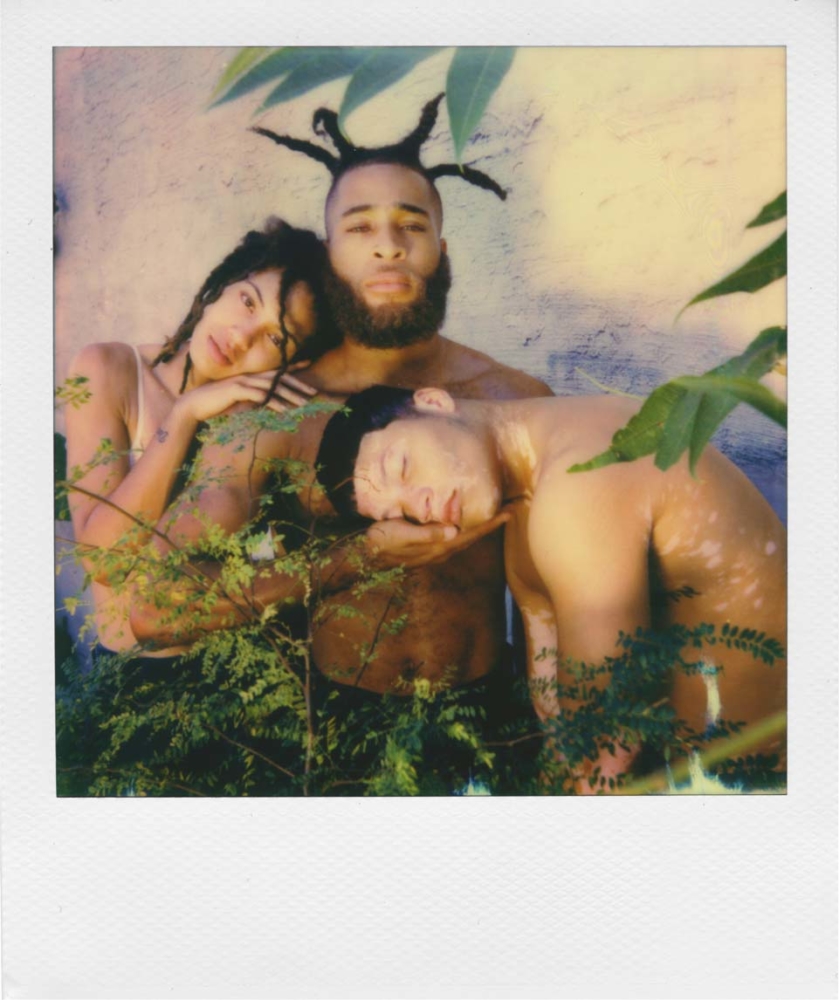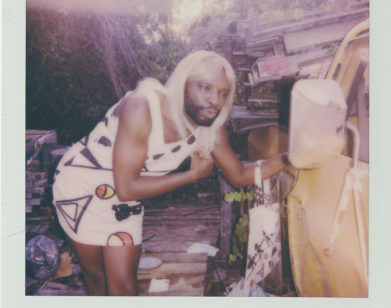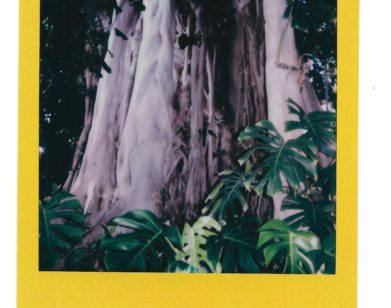Five young photographers who are reinventing Polaroid

To celebrate the launch of Polaroid’s OneStep 2 camera, the brand’s first analog instant camera since 2003, photographer Ryan McGinley trained his eye on five talented young artists, giving them the chance to shoot images on the new camera and have them shown in an exhibit next month. The photographers come from diverse backgrounds but share a socially-minded spirit: Marcus Branch, who has shot campaigns for Everlast, uses the theme of his native Philadelphia’s “Brotherly Love” in his work. Rochelle Brockington is using her work to fight for body positivity and representation in fashion and art, while Myles Loftin is interested in building opportunities for other minority artists. And Sabrina Santiago, who’s shot series on African American hair culture in Brooklyn and downtown skateboarders, is obsessed with capturing the beauty and messiness of the everyday.
MARCUS BRANCH
What about the concept of instant photography is so appealing to photographers?
MARCUS BRANCH: I believe that photography, in essence, celebrates and cherishes moments in time. They allow us to relive an intangible time, to reimagine, and to resume. Just like that, a moment passes, then another, and another, it’s what this experience of life is composed of. Polaroids mimic the speed of the moment in its nearly immediate capture and reflection of recent moments past.
Do you feel New York and Philadelphia have a heavy influence on your imagery?
BRANCH: I’m naturally influenced by what surrounds me both directly and indirectly, as it is ingested into my daily diet. The idea of nature versus nurture comes into play here. I believe there’s a heavy influence of the two, Philadelphia and New York, as they both are my main resources for subjects, locations, and tales alike, as well as the homes to many of my very own experiences and memories that in turn inform and shape my art and voice. One theme that I feel is quite prevalent in my developing work, that ties to a certain theme of Philadelphia, is “Brotherly Love.” It’s a theme I’ve explored over the year consciously and visually and one that I connect to personally.
SABRINA SANTIAGO
Do you have a favorite Polaroid picture?
SABRINA SANTIAGO: It’s an image by Walker Evans entitled “Leila Hill Eating a Cookie.” I remember the first time I saw the image and it has stuck out in my mind ever since. I love Leila’s blank expression, her clothing and her height in comparison to the chair she’s sitting in. It’s a timeless moment in my childhood. It makes me feel like a kid again. I also love that Leila could look back at that photo and snapshot of a moment in her childhood. One of my favorite aspects of photography is the tangibility to parts of yourself that change, age and grow—that photo really speaks to that for me.
Your photography captures moments of everyday life in an almost dramatic, melancholy way. What inspires that emotion and how do you decide the setting and body language, which is so defined in your photography?
SANTIAGO: I like to think of photography as a way to bridge the gap between my reality and fantasy. When I imagine how I’d like to photograph my subjects or am capturing moments of everyday life, I try to always have my imagination interweaved into the moments I capture. Whether that is the instant I decide to click the shutter because a mundane moment seems almost unreal or the way I tilt the camera to play with an environment. I’m also really fascinated by faces, body language, and expressions. Even the way a head is tilted can change an image tremendously. When I see someone I’d like to photograph, I imagine how I’d place them in my imagination, which I think plays into the dramatic nature of my photographs.
HUNTER ABRAMS
What was the first type of camera/film you remember shooting with?
HUNTER ABRAMS: The first real memory I have of photography is my dad handing me his Canon digital point and shoot camera and asking me to get a photo of my mom and him with our first dog on the day we brought him home. I tried to borrow that camera every chance I got.
What do you believe separates your fashion photography from all the others who are also taking pictures during fashion shows?
ABRAMS: I think my fashion photography captures my love and admiration for the industry and the people who create clothing and images. Fashion is so much more than clothes to me, it’s storytelling and craftsmanship combined. I hope my work reflects the reverence I have for the designers and fellow imagemakers in this industry.
MYLES LOFTIN
How do you think the photography world has changed with people having access to a great quality camera right from their phone?
MYLES LOFTIN: The photography world has certainly expanded, and I think it’s for the better. While the increased access to cameras creates the issue of people who aren’t true dedicated photographers, it also opens the possibility of more people being able to become photographers, who maybe originally couldn’t. You don’t have to save up to get a fancy DSLR if you can use your cellphone to create equally as amazing images.
Do you have a favorite Polaroid picture?
LOFTIN: I hate choosing favorites but I definitely have a selection of Polaroids that I really enjoy. Antonio Lopez’s Polaroids of Grace Jones are some of my favorite Polaroids. They’re so fun and energetic, and they capture her energy perfectly.
Your photography incorporates a lot of bright and vibrant colors, while making a statement on racial profiling. What do you feel is a platform you would like to see your photos showcased on that would really help get your message across?
LOFTIN: I’d like to see my photos showcased in galleries, magazines and wherever I can get a large number of people to see my work. I think the more people that see and understand the messages included in some of my photos, the greater chance there is for change.
ROCHELLE BROCKINGTON
Do you have a favorite Polaroid picture?
ROCHELLE BROCKINGTON: There’s this one polaroid that I’ve seen floating around on the internet of Basquiat on vacation. Somewhere tropical and palm trees behind him. I think that’s my favorite because out of all the images I’ve seen of him, he looks very happy, innocent, serene, like he didn’t have a problem in the world. I want all the pictures that are taken of me at different parts of my life to make someone feel like that when they look at them. It makes me feel hopeful and calm and I think that’s why it’s my favorite.
Your images touch on size inclusiveness and body positivity. Do you feel like the body positive movement has grown within the past few years?
BROCKINGTON: The body positivity movement has grown within the past few years and it’s awesome. I do see more representation in fashion and art and some brands are breaking away from their targeted audience to include different types of people. As a society, we have a long way to go, but this is a good start. Some people see body positivity as promoting an unhealthy lifestyle, but health can’t be necessarily determined by how someone looks, and to add to that their are “unhealthy” people in this world who deserve to see folks that look like them in mainstream media as well. With my own images, I like to represent the people who I’ve come across in my life. Black girls, fat girls, fat black girls, femmes having fun, and enjoying their existence. These are the people that have helped me grow personally, and even in the body positive community, they have been looked over countless times. Constantly putting them on display and representing them is an important part in my work and identity.
EACH PHOTOGRAPHER WILL SHOOT IMAGERY ON THE ONESTEP 2 CAMERA, WHICH WILL BE SHOWN AT CHESTERFIELD GALLERY IN NEW YORK CITY FROM DECEMBER 6-8, 2017, AND IN A LIMITED EDITION ZINE.











